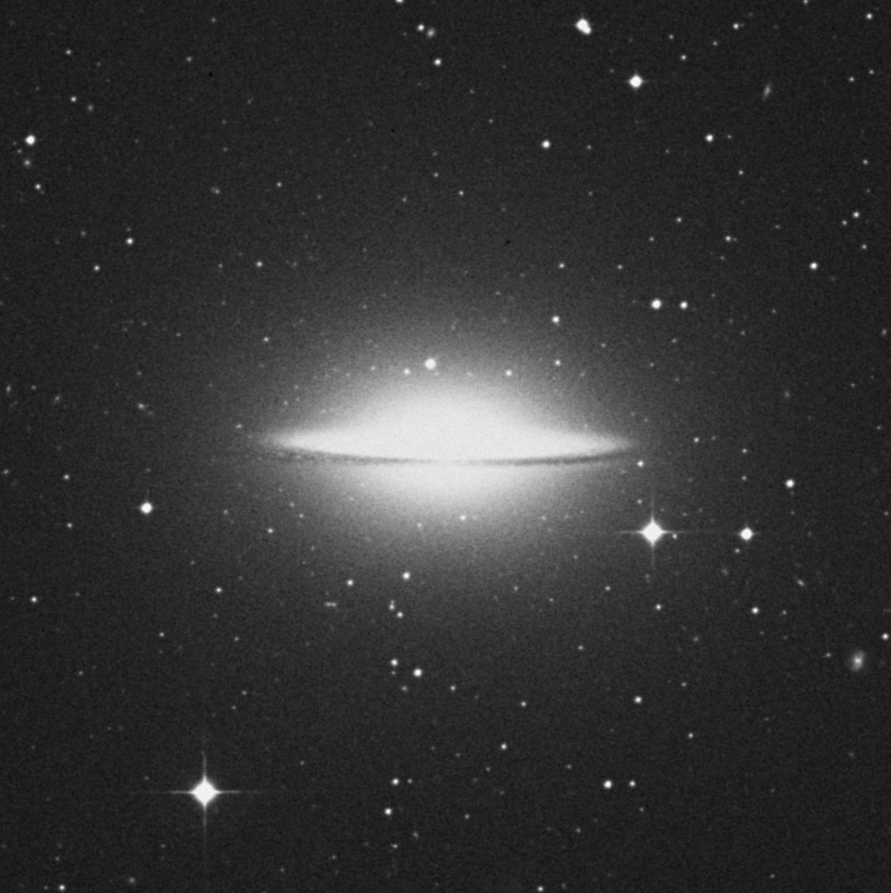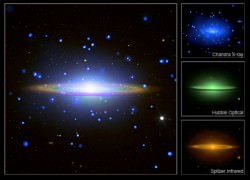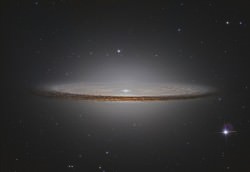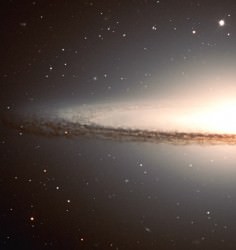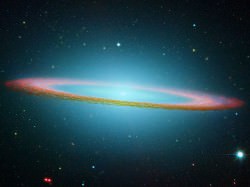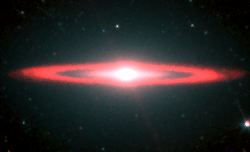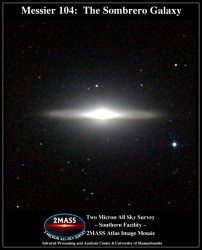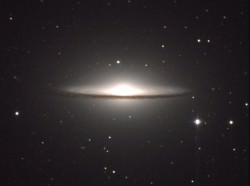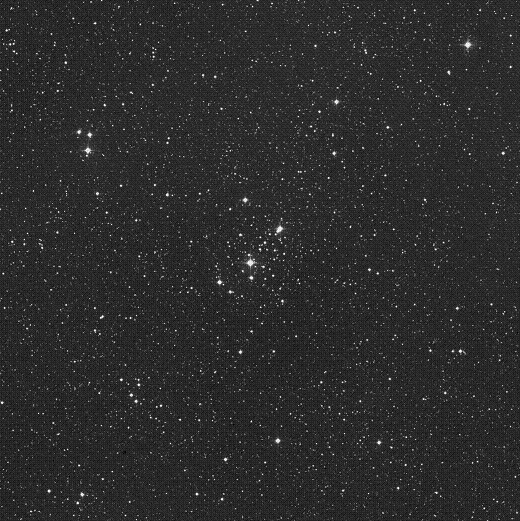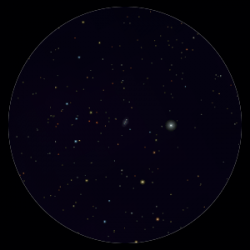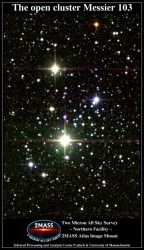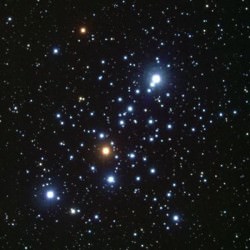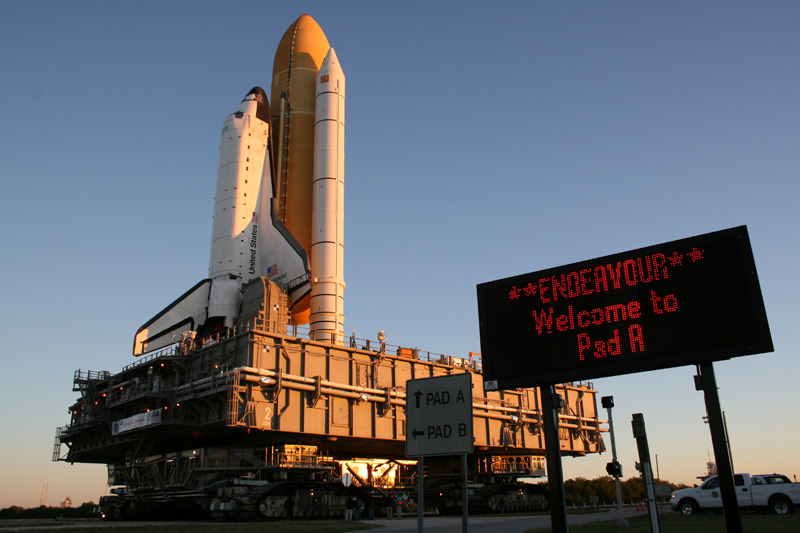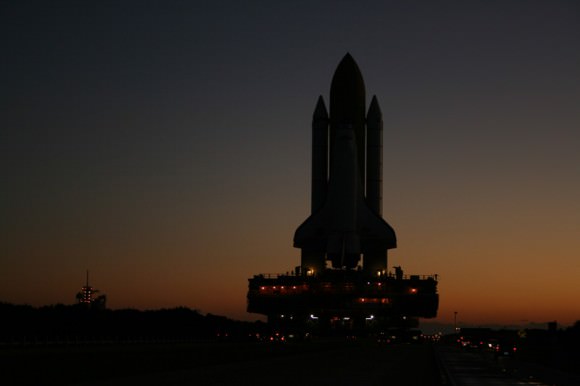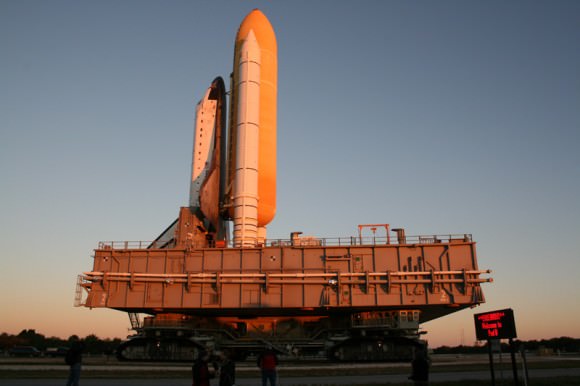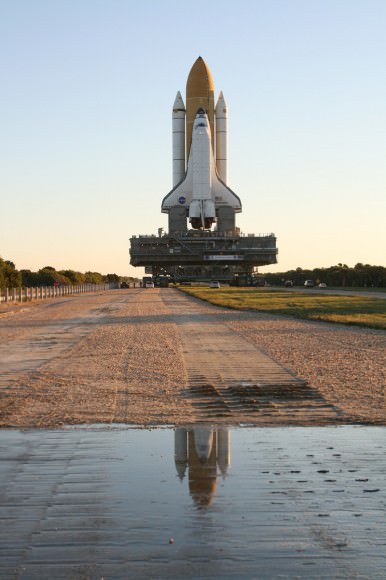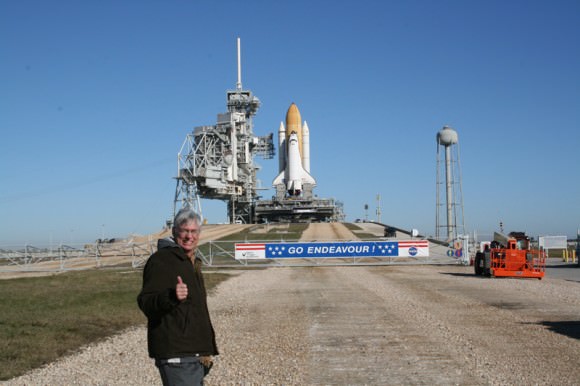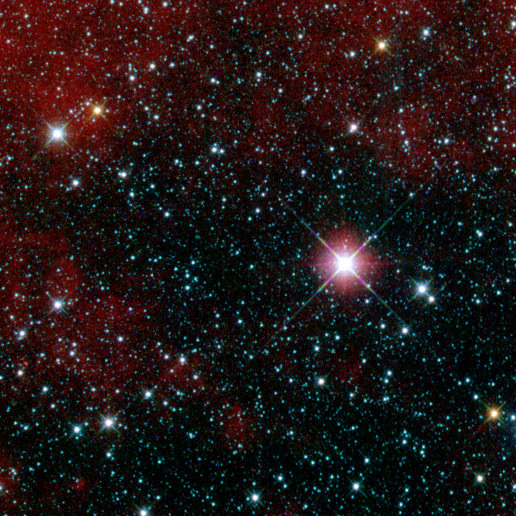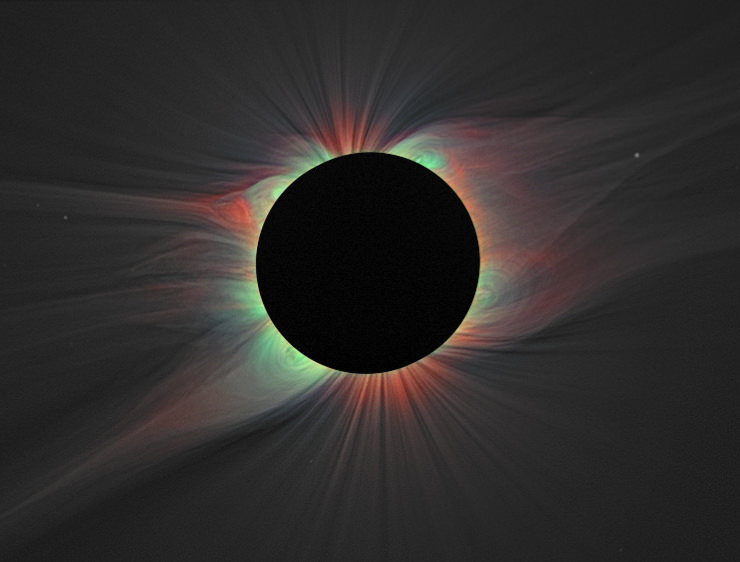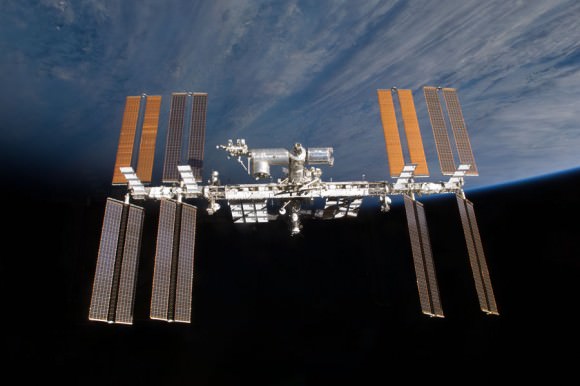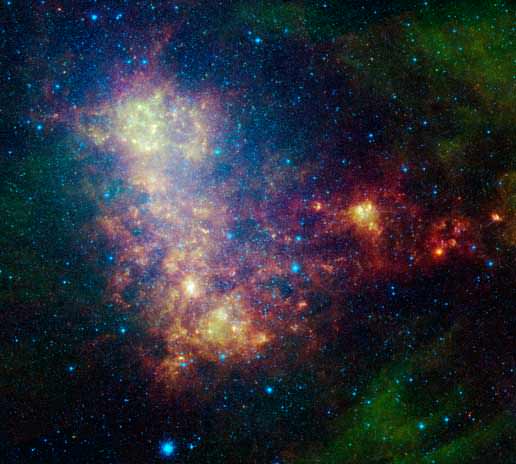Object Name: Messier 102
Alternative Designations: M102, NGC 5866, The Spindle Galaxy
Object Type: Lenticular Galaxy
Constellation: Draco
Right Ascension: 15 : 06.5 (h:m)
Declination: +55 : 46 (deg:m)
Distance: 45000 (kly)
Visual Brightness: 9.9 (mag)
Apparent Dimension: 5.2×2.3 (arc min)

Locating Messier 102: Locating Messier 102 isn’t particularly easy and will require a good start chart and some work. It’s rough location is about 10 degrees east/northeast of Eta Ursa Major – or about 10 degrees south of Gamma Ursa Minor. It will require at least a 4″ telescope at a relatively dark sky to be seen brightly, and will begin to show both structure and its dark dustlane at apertures approaching 6-8″. For smaller scopes, it will appear as a thin streak of nebulosity. If you are at a very dark sky site, you can use Iota Draconis and shift about 3 deg southwest in the direction of Eta Ursae Majoris or use Theta Bootis where M102 is just to the south.
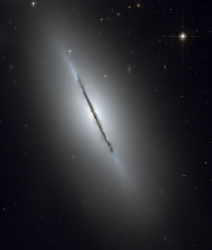 What You Are Looking At: Located some 45 million light-years and part of a galaxy grouping, M102 is a wonderful lenticular galaxy seen almost edge-on. And seeing is believing! From this beautiful Hubble image and the words of Bill Keel: “The dust lane is slightly warped compared to the disk of starlight. This warp indicates that NGC 5866 may have undergone a gravitational tidal disturbance in the distant past, by a close encounter with another galaxy. This is plausible because it is the largest member of a small cluster known as the NGC 5866 group of galaxies. The starlight disk in NGC 5866 extends well beyond the dust disk. This means that dust and gas still in the galaxy and potentially available to form stars does not stretch nearly as far out in the disk as it did when most of these stars in the disk were formed.”
What You Are Looking At: Located some 45 million light-years and part of a galaxy grouping, M102 is a wonderful lenticular galaxy seen almost edge-on. And seeing is believing! From this beautiful Hubble image and the words of Bill Keel: “The dust lane is slightly warped compared to the disk of starlight. This warp indicates that NGC 5866 may have undergone a gravitational tidal disturbance in the distant past, by a close encounter with another galaxy. This is plausible because it is the largest member of a small cluster known as the NGC 5866 group of galaxies. The starlight disk in NGC 5866 extends well beyond the dust disk. This means that dust and gas still in the galaxy and potentially available to form stars does not stretch nearly as far out in the disk as it did when most of these stars in the disk were formed.”
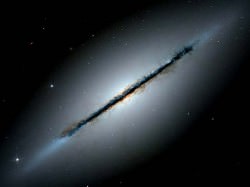 “The Hubble image shows that NGC 5866 shares another property with the more gas-rich spiral galaxies. Numerous filaments that reach out perpendicular to the disk punctuate the edges of the dust lane. These are short-lived on an astronomical scale, since clouds of dust and gas will lose energy to collisions among themselves and collapse to a thin, flat disk. For spiral galaxies, the incidence of these fingers of dust correlates well with indicators of how many stars have been formed recently, as the input of energy from young massive stars moves gas and dust around to create these structures. The thinness of dust lanes in S0s has been discussed in ground-based galaxy atlases, but it took the resolution of Hubble to show that they can have their own smaller fingers and chimneys of dust.”
“The Hubble image shows that NGC 5866 shares another property with the more gas-rich spiral galaxies. Numerous filaments that reach out perpendicular to the disk punctuate the edges of the dust lane. These are short-lived on an astronomical scale, since clouds of dust and gas will lose energy to collisions among themselves and collapse to a thin, flat disk. For spiral galaxies, the incidence of these fingers of dust correlates well with indicators of how many stars have been formed recently, as the input of energy from young massive stars moves gas and dust around to create these structures. The thinness of dust lanes in S0s has been discussed in ground-based galaxy atlases, but it took the resolution of Hubble to show that they can have their own smaller fingers and chimneys of dust.”
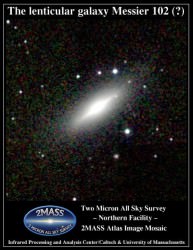 But what happens when the stars are done forming? Take a look in infrared… “S0 galaxies are often thought to be passively evolved from spirals after star formation is quenched. To explore what is actually occurring in such galaxies, we present a multi-wavelength case study of NGC 5866—a nearby edge-on S0 galaxy in a relatively isolated environment. This study shows strong evidence for dynamic activities in the interstellar medium, which are most likely driven by supernova explosions in the galactic disk and bulge.” says Jiang-Tao Li (et al).
But what happens when the stars are done forming? Take a look in infrared… “S0 galaxies are often thought to be passively evolved from spirals after star formation is quenched. To explore what is actually occurring in such galaxies, we present a multi-wavelength case study of NGC 5866—a nearby edge-on S0 galaxy in a relatively isolated environment. This study shows strong evidence for dynamic activities in the interstellar medium, which are most likely driven by supernova explosions in the galactic disk and bulge.” says Jiang-Tao Li (et al).
 “Understanding these activities can have strong implications for studying the evolution of such galaxies. We utilize Chandra, Hubble Space Telescope, and Spitzer data as well as ground-based observations to characterize the content, structure, and physical state of the medium and its interplay with the stellar component in NGC 5866. A cold gas disk is detected with an exponential scale height of ~102 pc. Numerous distinct off-disk dusty spurs are also clearly present: prominent ones can extend as far as ~3 × 102 pc from the galactic plane and are probably produced by individual SNe, whereas faint filaments can have ~kpc scale and are likely produced by SNe collectively in the disk/bulge.”
“Understanding these activities can have strong implications for studying the evolution of such galaxies. We utilize Chandra, Hubble Space Telescope, and Spitzer data as well as ground-based observations to characterize the content, structure, and physical state of the medium and its interplay with the stellar component in NGC 5866. A cold gas disk is detected with an exponential scale height of ~102 pc. Numerous distinct off-disk dusty spurs are also clearly present: prominent ones can extend as far as ~3 × 102 pc from the galactic plane and are probably produced by individual SNe, whereas faint filaments can have ~kpc scale and are likely produced by SNe collectively in the disk/bulge.”
 But what’s hot can also be very cool… and it the Spindle Galaxy’s case it the amount of interstellar medium. Says G.K. Kacprzak (New Mexico State University) and G.A. Welch (Saint Mary’s University): “The nearly edge-on S0 galaxy NGC 5866 is notable for its massive molecular interstellar medium, prominent central dust lane, and large IRAS 100 micron flux. The galaxy is relatively isolated, and neither the kinematics nor morphology of the gas suggests that a merger has taken place. Instead, NGC 5866 may be entering an era of star formation fueled with gas donated by its aging stellar population. Are we seeing a counter example of the popular view that galaxies evolve through mergers? We explore that possibility using multi-transition CO observations and SCUBA (Submillimetre Common-User Bolometer Array) imagery of NGC 5866. We analyze the dust and gas components of the interstellar medium using techniques such as the large velocity gradient (LVG) models and a three-dimensional Monte Carlo radiation transfer code. A comparison of SCUBA and appropriately convolved H alpha images reveals both to have similar structure and morphology. This complements the fact that the SCUBA fluxes were under predicted by the Monte Carlo code which does not take star formation into account. Both of those facts indicate that NGC 5866 is indeed under going star formation.”
But what’s hot can also be very cool… and it the Spindle Galaxy’s case it the amount of interstellar medium. Says G.K. Kacprzak (New Mexico State University) and G.A. Welch (Saint Mary’s University): “The nearly edge-on S0 galaxy NGC 5866 is notable for its massive molecular interstellar medium, prominent central dust lane, and large IRAS 100 micron flux. The galaxy is relatively isolated, and neither the kinematics nor morphology of the gas suggests that a merger has taken place. Instead, NGC 5866 may be entering an era of star formation fueled with gas donated by its aging stellar population. Are we seeing a counter example of the popular view that galaxies evolve through mergers? We explore that possibility using multi-transition CO observations and SCUBA (Submillimetre Common-User Bolometer Array) imagery of NGC 5866. We analyze the dust and gas components of the interstellar medium using techniques such as the large velocity gradient (LVG) models and a three-dimensional Monte Carlo radiation transfer code. A comparison of SCUBA and appropriately convolved H alpha images reveals both to have similar structure and morphology. This complements the fact that the SCUBA fluxes were under predicted by the Monte Carlo code which does not take star formation into account. Both of those facts indicate that NGC 5866 is indeed under going star formation.”
History: NGC 5866 was probably first turned up by Pierre Mechain during March 1781 – or was observed by Charles Messier himself around that time. Despite Mechain’s disclaimer 2 years later, chances are good that NGC 5866 is object #102 rather than a reclassification of Messier 101. (Considering the personal problems Messier was having during that period, it’s small wonder that an error could have been made.) While Messier orginally added it to his published catalog without verifying its position, he did return later to verify this beautiful galaxy was almost exactly 5 degrees preceding (west) of the actual position previously published. In his 1781 personal notes, Messier writes: “Nebula between the stars Omicron [actually Theta] Bootis and Iota Draconis: it is very faint; near it is a star of the sixth magnitude. (Handwritten position added by Messier in his personal copy: 14h 40m, +56.).”
Even Pierre Mechain was vexed by the error and his letter to Bernoulli on May 6, 1783, he writes: “I will add only that No. 101 & 102 on the p. 267 of the Connoissance des tems [for] 1784 are nothing but the same nebula, which has been taken for two, by an error in the [sky] charts.” Later, Bode would find in his notes: “On page 267 of the “Connoissance des Temps for 1784″ M. Messier lists under No. 102 a nebula which I have discovered between Omicron [actually Theta] Bootis and Iota Draconis; this is a mistake. This nebula is the same as the preceding No. 101. Mr. Messier, caused by an error in the sky charts, has confused this one in the list of my nebulous stars communicated to him.” Although the positioning error occurred, the description was correct for NGC 5866.
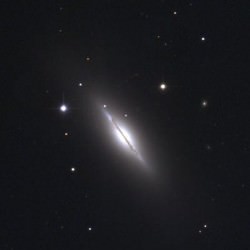 It’s Messier designation will probably forever by the subject of debate, but even other notable astronomers called in errors on this one as well. Both Herschels observed it and even Admiral Smyth – who probably following an error by John Herschel in his 1833 catalog, confuses its number with H I.219 (which is NGC 3665, a galaxy in Ursa Major), and thus erroneously gives that object’s discovery date, March 1789: “A small but brightish nebula, on the belly of Draco, with four small stars spreading across the field, north of it. There may be a doubt as to whether this is the nebula discovered by Mechain in 1789, since Messier merely describes it as “very faint,” and situated between Omicron Bootis and Iota Draconis. But there must be some mistake here; the one being on the herdman’s leg, and the other in the coil of the Dragon far above the head of Bootes, having 22 deg of declination and 44′ [44 min] of time [in RA] between them, a space full of all descriptions of celestial objects. But as the Theta in the raised right hand of Bootes, if badly made, might be mistaken for an omicron, this is probably the object seen by Mechain, and JH’s 1910 [NGC 5879]; it being the brightest nebula of five in that vicinity [actually, the brightest is NGC 5866]. A line from Kappa in Draco’s tail, led to the south-east of Thuban, and prolonged as far again, strikes upon its site.”
It’s Messier designation will probably forever by the subject of debate, but even other notable astronomers called in errors on this one as well. Both Herschels observed it and even Admiral Smyth – who probably following an error by John Herschel in his 1833 catalog, confuses its number with H I.219 (which is NGC 3665, a galaxy in Ursa Major), and thus erroneously gives that object’s discovery date, March 1789: “A small but brightish nebula, on the belly of Draco, with four small stars spreading across the field, north of it. There may be a doubt as to whether this is the nebula discovered by Mechain in 1789, since Messier merely describes it as “very faint,” and situated between Omicron Bootis and Iota Draconis. But there must be some mistake here; the one being on the herdman’s leg, and the other in the coil of the Dragon far above the head of Bootes, having 22 deg of declination and 44′ [44 min] of time [in RA] between them, a space full of all descriptions of celestial objects. But as the Theta in the raised right hand of Bootes, if badly made, might be mistaken for an omicron, this is probably the object seen by Mechain, and JH’s 1910 [NGC 5879]; it being the brightest nebula of five in that vicinity [actually, the brightest is NGC 5866]. A line from Kappa in Draco’s tail, led to the south-east of Thuban, and prolonged as far again, strikes upon its site.”
Don’t you mistake the beautiful Spindle Galaxy for anything but a great observation!
Top M102 image credit, Palomar Observatory courtesy of Caltech, M102 Hubble Images, 2MASS M102 image, M102 data images by AANDA and M102 image courtesy of NOAO/AURA/NSF.


